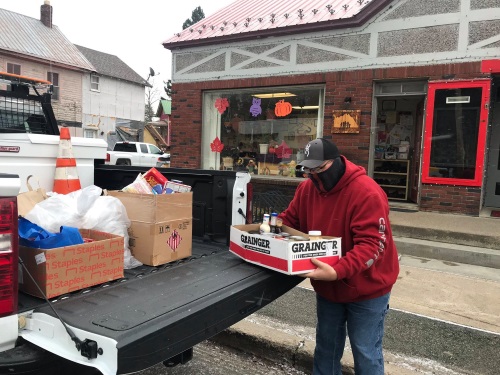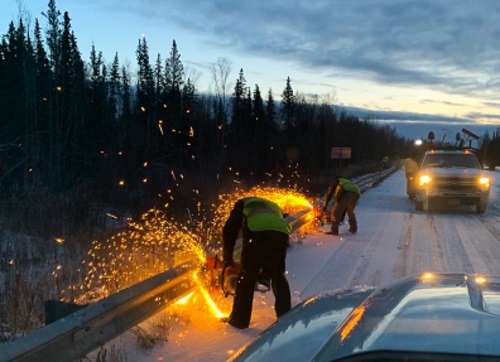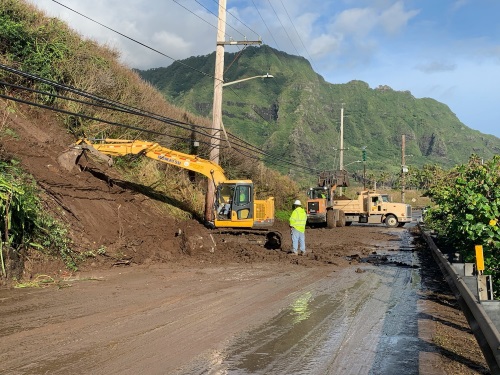One of the knowledge sessions during the 2021 virtual spring meeting of the American Association of State Highway and Transportation Officials focused on the need for strategic infrastructure investments to ensure sustained access and mobility for people and goods during a crisis.
[Above photo by the NYSDOT]
Several state department of transportation executives provided some of the insights on that topic gained from their response to the COVID-19 pandemic over the last year and a half.

Marie Therese Dominguez, commissioner of the New York State Department of Transportation, said her agency had the good fortune to be “prepared from a technology standpoint” at the pandemic’s outset to rapidly pivot to work-from-home environments. “It allowed us to be incredibly nimble,” she said.
Dominguez noted that a “crisis of this magnitude” like COVID-19 required a lot of “out of the box thinking” where transportation needs were concerned.
“COVID-19 is an enemy in a different form – an invisible form that affected all of us,” she explained.
For example, Dominguez said NYSDOT vetted a total of 80,000 doctors and nurses to come help New York respond to the COVID-19 outbreak, out of which 13,000 eventually came to the state to help fight the pandemic.
“We even coordinated use of inner city buses to transport nurses from upstate hospitals to inner city hospitals,” she added.
Dominguez also noted that NYSDOT worked with Amtrak to retrofit train cars to transport COVID patients from downstate hospitals to upstate ones that had capacity – ensuring those cars would have enough power to run monitors and oxygen delivery systems.
“Thankfully, we never had to activate that plan,” she stressed. “But that is the kind of thinking and planning that is a lesson learned on how to leverage a transportation system in a time of crisis. And it’s important to remember we did all this while maintaining our state’s transportation network.”

Roger Millar, secretary of the Washington State Department of Transportation, noted several internal and external changes his agency is experiencing resulting from COVID-19.
“Take transit: one lesson we learned came from our initial response to the pandemic, where we transitioned overnight to a delivery system of goods and services to people,” he said.
“We became a mobility service delivering meals and medicines, plus free rides to vaccination centers,” millar noted. “In some cases, transit provided the only at-home care some people received. We found that tribal, not-for-profit, and rural transit providers jumped in to help their communities. As a result, we need more funding flexibility – that is key for managing such transitions, in terms of indemnifying maximum flexibility for state and federal dollars.”
Internally, the broad transition to work-from-home environments for WSDOT employees in response to the pandemic has significantly increased demand for more telework options going forward.
“We found people were very happy with our switch to telework – and most of our teams don’t want to go back to office; they’ve remained very productive,” Millar noted. “So one of our aspirational goals now is that the average WSDOT employee can telework 40 percent of the time.”

However, for Paul Ajegba – director of the Michigan Department of Transportation – one of the big concerns is how the pandemic will alter future transportation demand, especially in terms of how that impacts transit infrastructure investment.
“It is about how we restore confidence back in transit again,” he said.
“Will people be comfortable to stand next to others who are not wearing a mask all the way through downtown? What happens to [transit] business models that have eight people together in small bus? There is still a lot of anxiety still out there,” Ajegba noted.
“We’ve worked quickly to develop transit safety guidelines — cleaning buses, establishing social distancing – but we’ve also left many of the specific details to each transit agencies; one size does not fit all. It is about finding a happy medium,” he added.



